Table of contents:
When you think of Japanese food, what comes to mind first? Sushi or sashimi? If so, you're definitely thinking in the right direction. Because the most important ingredient of both components - fish - plays a very big role in Japanese cuisine. Sushi is not eaten every day in Japan! From the partially poisonous fugu to delicate salmon and grilled mackerel, fish lovers in Japan can sample some excellent specialties.
How does fish get to the table?
Fish is served in countless variations. It is very often simply grilled and then seasoned with a little salt and soy sauce. It is also often wrapped in aluminum foil before grilling. This keeps the finished fish incredibly tender and juicy. Alternatively, fish is often marinated in sweet soy sauce and then cooked. Various fish are also steamed, often in combination with root vegetables or rice. And of course, fish is also fried, either simply or in crispy tempura batter.
What about raw fish?
Raw fish is also very popular. In Japan, you can eat it without any worries in most cases. Fishmongers know that their catch is sometimes eaten raw, so they place extreme importance on very high quality. In Germany, on the other hand, you have to be a little more careful and specifically buy "fish in sashimi quality" if you want to eat it raw.
Which fish are particularly popular?
There are some standard fish in Japan that are found in many dishes. We have listed the most popular below. These include mackerel, tuna and salmon. But of course, every Japanese region has its own fish specialties. The time of year also has a great influence on which fish are currently "in season".
Fish products
Fish in one form or another is found in almost every Japanese dish - even if it doesn't seem so at first glance! A standard ingredient in almost every Japanese dish is Dashi: A broth made from dried fish flakes and seaweed. Many ready-made dishes are also garnished with dried fish skin (Katsuobushi).
Aji - Japanese Mackerel
Aji is Japanese and describes a mackerel that is economically and culinarily important in Japan. It is fished on a large scale, as well as farmed in aquaculture.
- Size: 15 cm
- English Name: "Jack mackerel Trevally Horse mackerel"
- Found in these recipes: Ajifurai, Ajisioyaki, Ajimunieru, Ajinonizuke
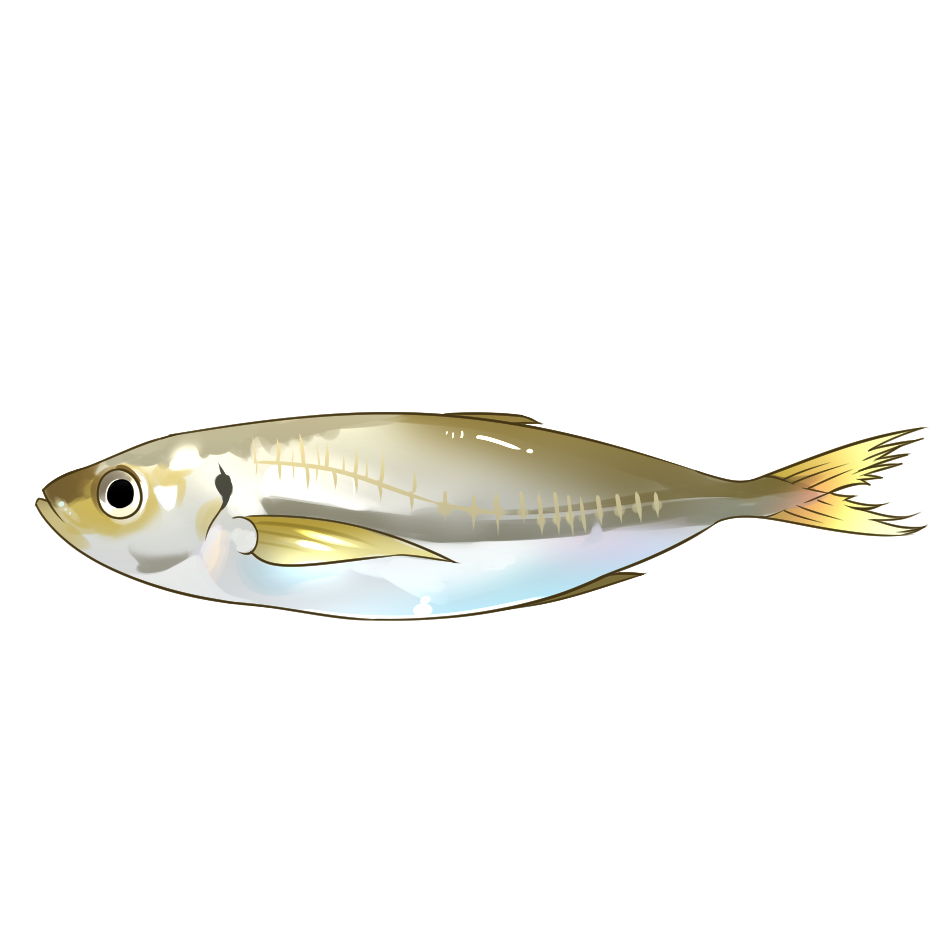
Buri - Japanese Amberjack
The Japanese amberjack (Buri) is a fish from the family of the spiny mackerels. Buri refers to the adult fish and is a schooling predatory fish. As the yellowtail mackerel is increasingly farmed, it is available year-round in consistent quality. Its strong flesh has a slightly mineral taste and a fresh, salty smell. It is extremely nutritious and rich in nutrients such as omega-3 fatty acids.
- Size: 1 m
- English Name: "Japanese amberjack Five-ray yellowtail"
- Found in these recipes: Burinosuimino, Susi, Buridaikonn, Sasimi, Syabusyabu

Fugu - Japanese Pufferfish
Pufferfish are highly poisonous. In Germany they are not allowed to be served, but in Japan they are part of the cultural heritage and a delicacy at the same time. The hunt for fugu for a deadly taste experience in Japan raises questions in Germany. Even today, the cult surrounding pufferfish is nowhere as pronounced as in Shimonoseki.
- Size: 20 cm
- English Name: "Pufferfish"
- Found in these recipes: Fugusasi, Fugunabe

Hirame - Halibut, Flounder, Largetooth Flounder, Sole
Hirame is basically about the Pacific largetooth flounder, which belongs to the family of the sole. Due to the high demand and now endangered wild stocks, the majority of catches come from aquaculture in Japan or Korea. So over 50% of all Korean aquaculture farms raise Hirame. The usual fishing seasons are usually between autumn and winter. The muscle on the back is called Engawa, which contains a lot of fat and is tighter/firmer. Its intense flavor makes it very popular with the Japanese.
- Size: 10 cm - 50 cm
- English Name: "Bastard halibut, Olive flounder"
- Found in these recipes: Sasimi, Susi, Munieru
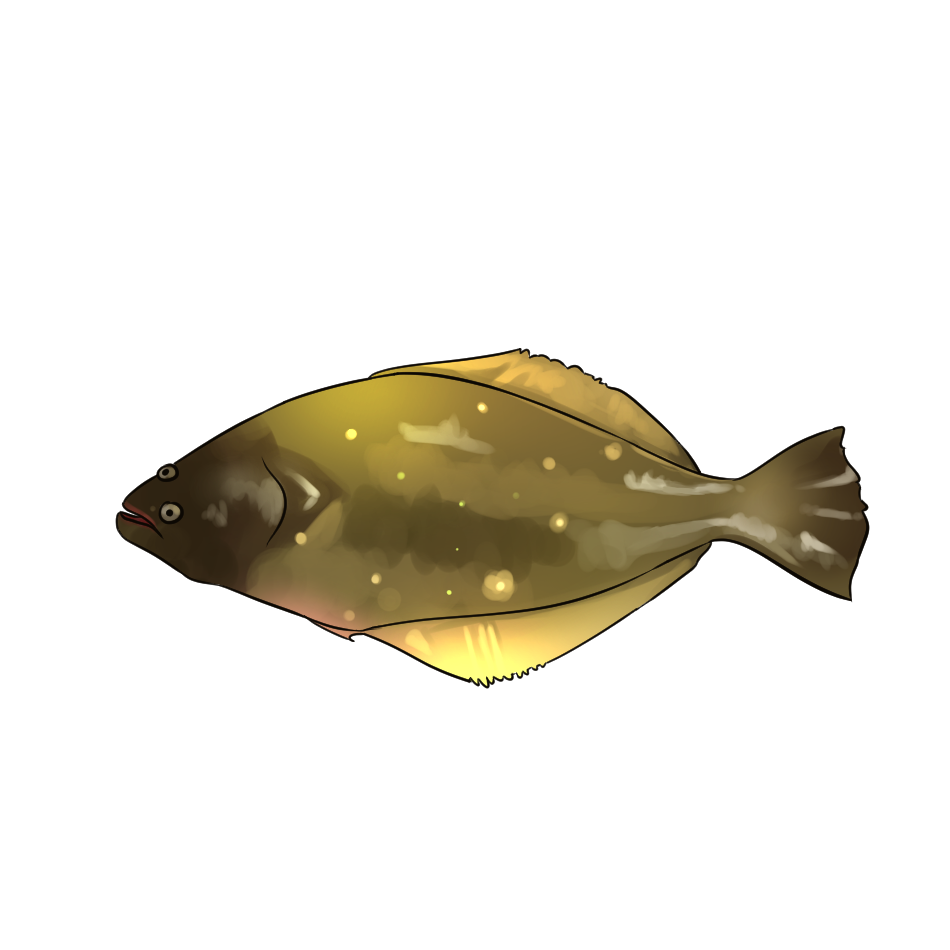
Iwashi - Japanese Sardine, Pacific Sardines
Iwashi usually lives near the water surface, which is why their iridescent skin shows traces of blue. With a relatively short lifespan, their ability to reproduce quickly is one of the most sustainable food sources. Iwashi has a high fat content, is rich in omega-3 fatty acids and vitamin D and has a low to zero mercury content. They are in season between summer and autumn in the months of June to November.
- Size: 10 cm - 30 cm
- English Name: "Sardine, Round herring, Anchovy"
- Found in these recipes: Iwasinonimono, Iwasinoumeni, Iwasinomisosiru, Iwasinotennpura

Kasago - Marbled Rockfish
Kasago is most commonly found on rocky, algae-covered grounds. The dorsal and anal fins have some rays that have developed into poisonous spines, which it raises in danger. The poison can also be fatal to humans. Nevertheless, the rockfish is a good food fish. Large specimens are steamed whole or roasted in the oven. Of course, you should remove its skin before preparation. The rockfish turns a decorative red after cooking and has a relatively soft flesh.
- Size: 10 cm - 40 cm
- English Name: "False kelpfish, Marbled rockfish"
- Found in these recipes: Kasagonoamazakeannkake, Kasagonabe.

Katsuo - Skipjack Tuna
Skipjack tuna lives in tropical and subtropical seas, but is also occasionally caught in the North Sea in summer. The False Bonito (Auxis thazard) looks similar, but its flesh is considered less valuable. Skipjack Tuna is one of the most economically important species marketed as "tuna". It is offered fresh, frozen or canned. In Japanese cuisine, it is processed as Katsuobushi, i.e. dried and smoked or as Katsuo no shiokara.
- Size: 40 cm - 1 m
- English Name: "Bonito Skipjack"
- Found in these recipes: Sasimi, Katuonotataki, Tekonesusi, Karaage, Nizuke
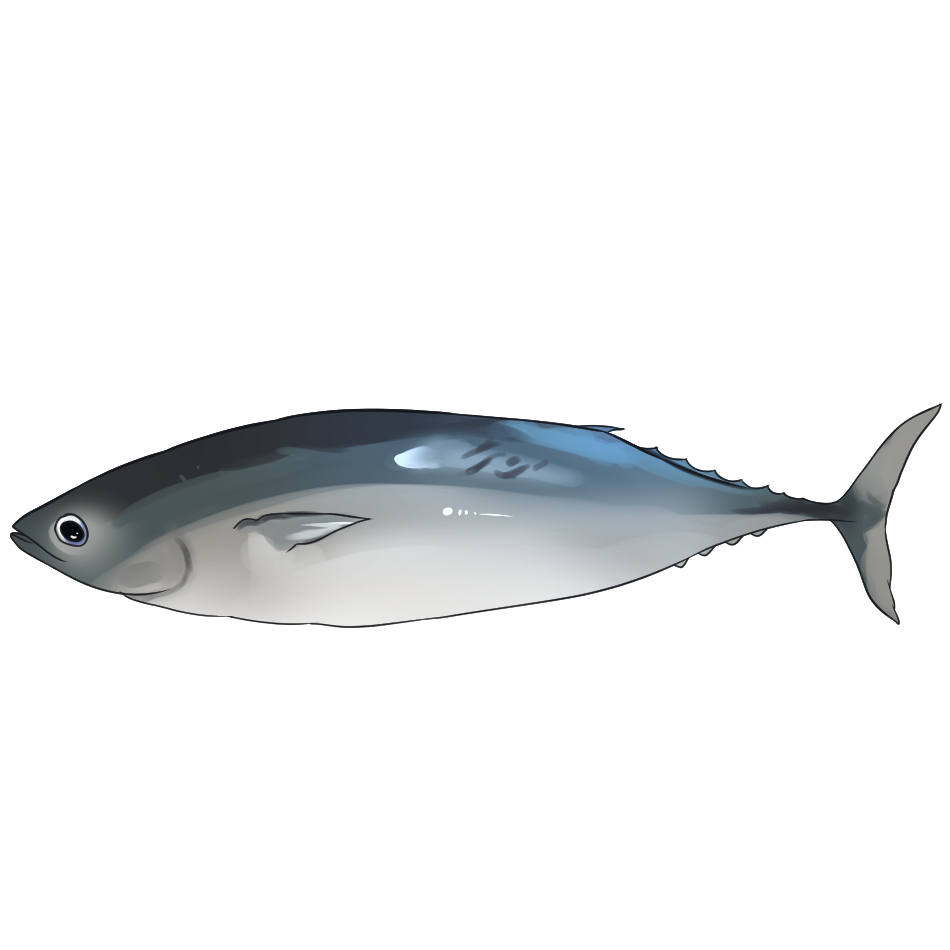
Tachi-uo - Hairtail
Largehead hairtails have a silvery steel blue color and turn silvery gray after death. The lamellae are generally semi-transparent and can have a yellowish sheen. Largehead hairtails have an elongated shape with a thin, pointed tail. Largehead hairtail is an important commercial species. With reported landings of over 1.3 million tonnes in 2009, it was the sixth most important fish species caught. In Japan, they are fished and grilled or eaten raw as sashimi.
- Size: 18 cm - 1 m
- English Name: "Cutlassfish"
- Found in these recipes: Tennpurs, Nianago, Sasimi, Yakianago
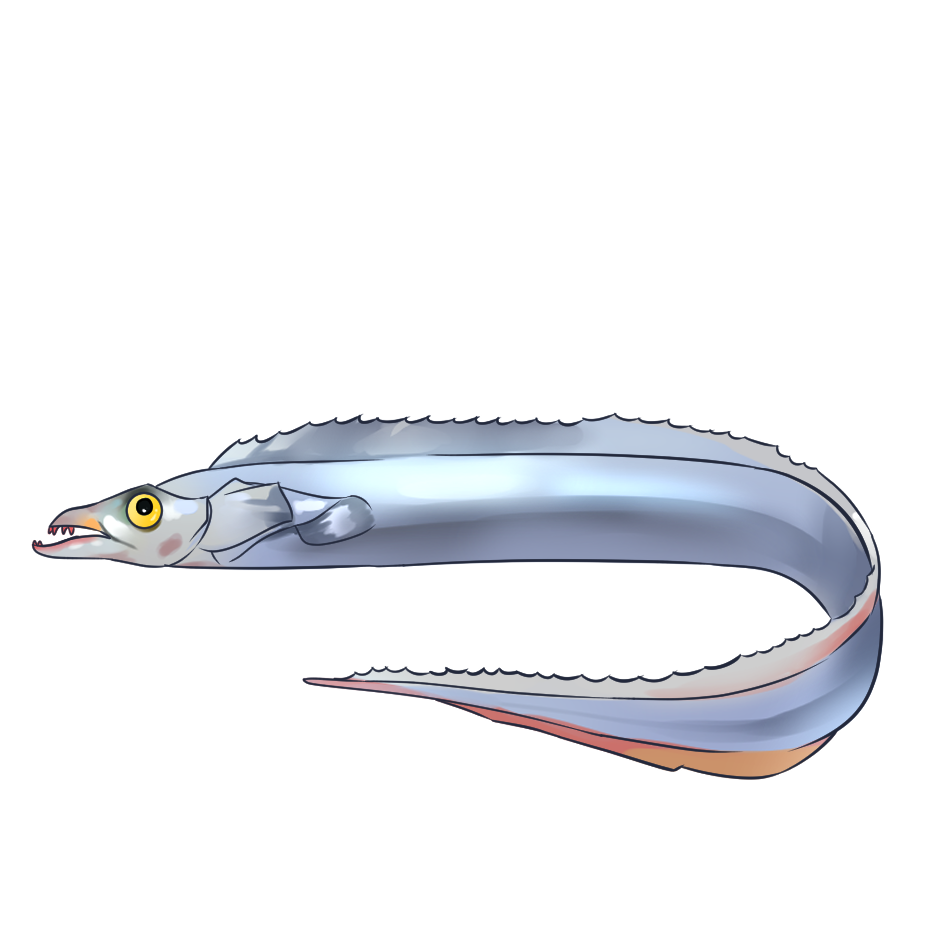
Madai - Red Sea Bream
Madai has long been a very famous and prized fish in Japan. Whether as an offering to the gods or a festive dish, the Madai is one of the special fish in Japan. The annual demand for Madai peaks at Sakura (the Japanese cherry blossom festival), when Sakuramada is traditionally served in Japan. That's why Madai is considered the "King of Fishes" in Japan.
- Size: 30 cm - 70 cm
- English Name: "Japanese red seabream, Red seabream snapper"
- Found in these recipes: Sasimi, Munieru, Soyaki, Hoiruyaki
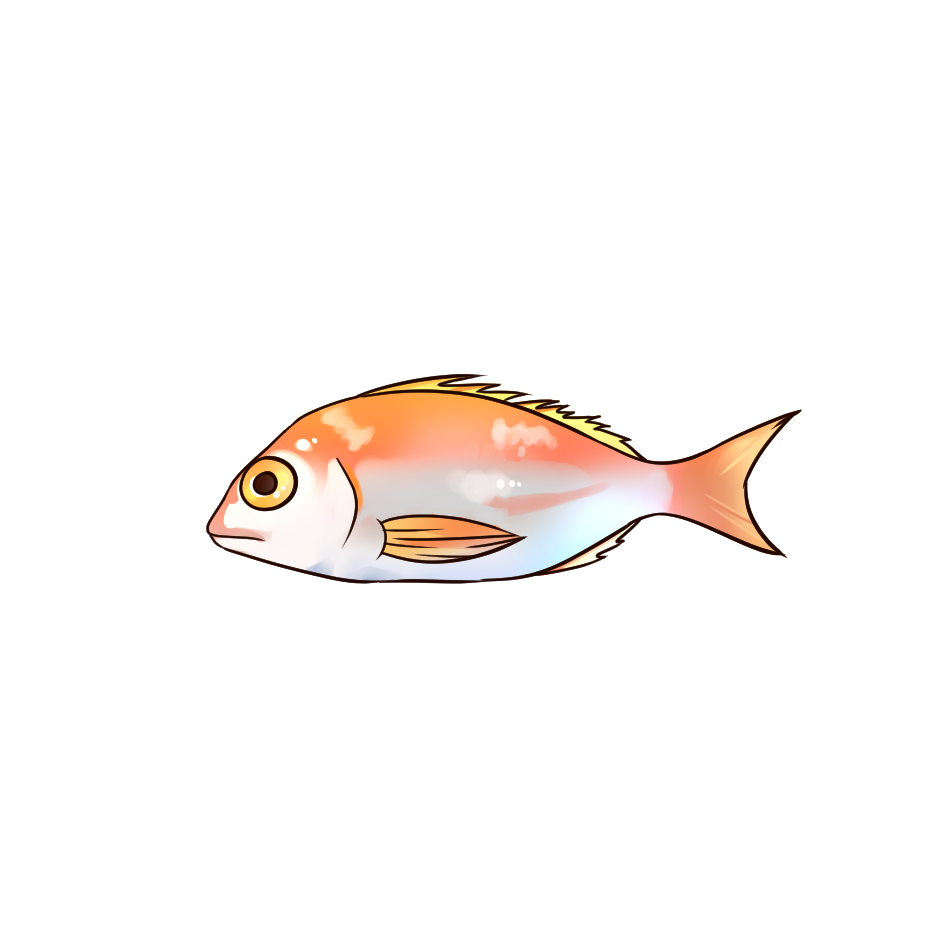
Maguro - Tuna
Maguro is actually a collective term for various tunas. That means that in most cases on the menu, it refers to Akami, the meat from the back of the Hon-Maguro (bluefin tuna) or Kihada, the cheaper yellowfin tuna. Even unfrozen Hon-Maguro is something very special. A specialty off the Japanese coast, which is caught wild and can be landed within a few hours.
- Size: 60 cm - 3 m
- English Name: "Tuna"
- Found in these recipes: Sasimi, Susi, Agurosuteeki, Maguronotataki

Nijimasu - Rainbow Trout
The rainbow trout is a fast-growing salmonid native to North America that was bred as a food fish in the second half of the 19th century. A number of local populations and certain subspecies are considered endangered in some places and are listed in the Endangered Species Act. However, rainbow trout have been artificially propagated by the U.S. Fish and Wildlife Service since 1870 to increase stocks in natural waters.
- Size: 10 cm - 30 cm
- English Name: "Rainbow trout"
- Found in these recipes: Suzuke, Karaage, Siotaki
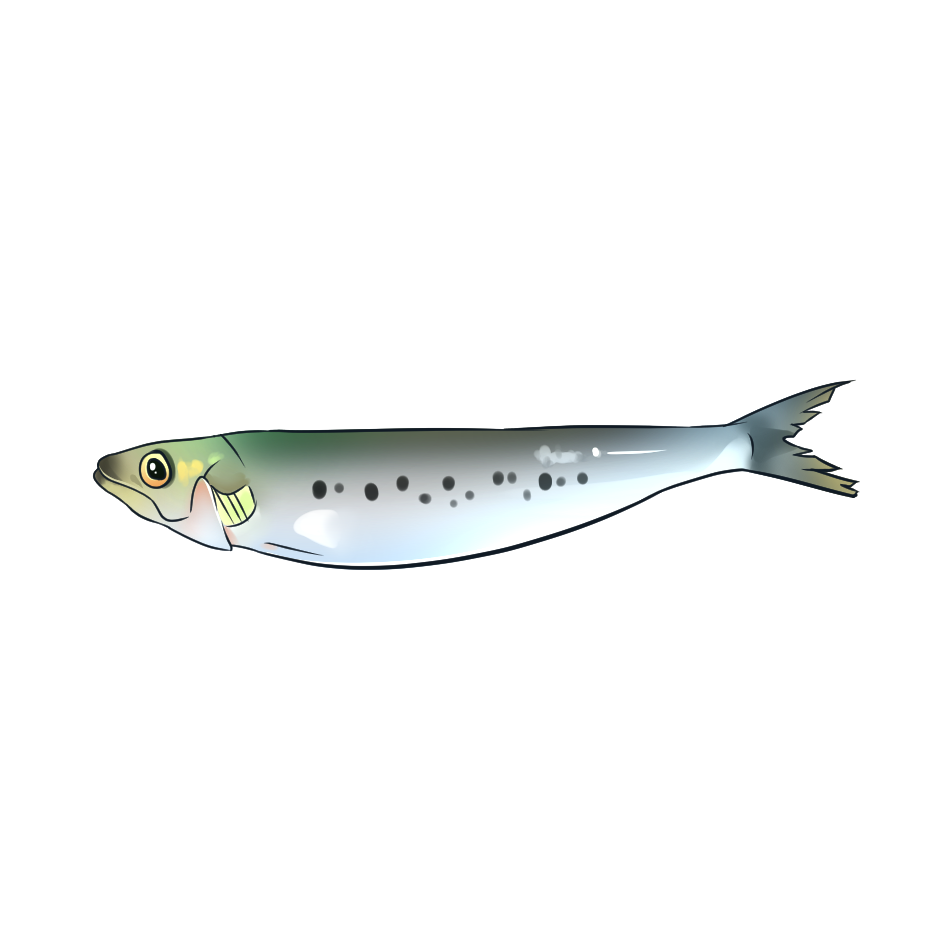
Saba - Mackerel
Saba is not only an extremely practical food for the topic of emergency rations, but with its unsaturated fatty acids and a high vitamin B2 content, it is totally nutritious and healthy. And thus, the mackerel is part of the health trend of recent years. Saba is a dish that is on the one hand a traditional representative of home-grown Japanese cuisine and is considered a sustainable fish species on which many fishing villages in Japan live.
- Size: 20 cm - 30 cm
- English Name: "Mackerel"
- Found in these recipes: Shioyaki, Simesaba, Nituke
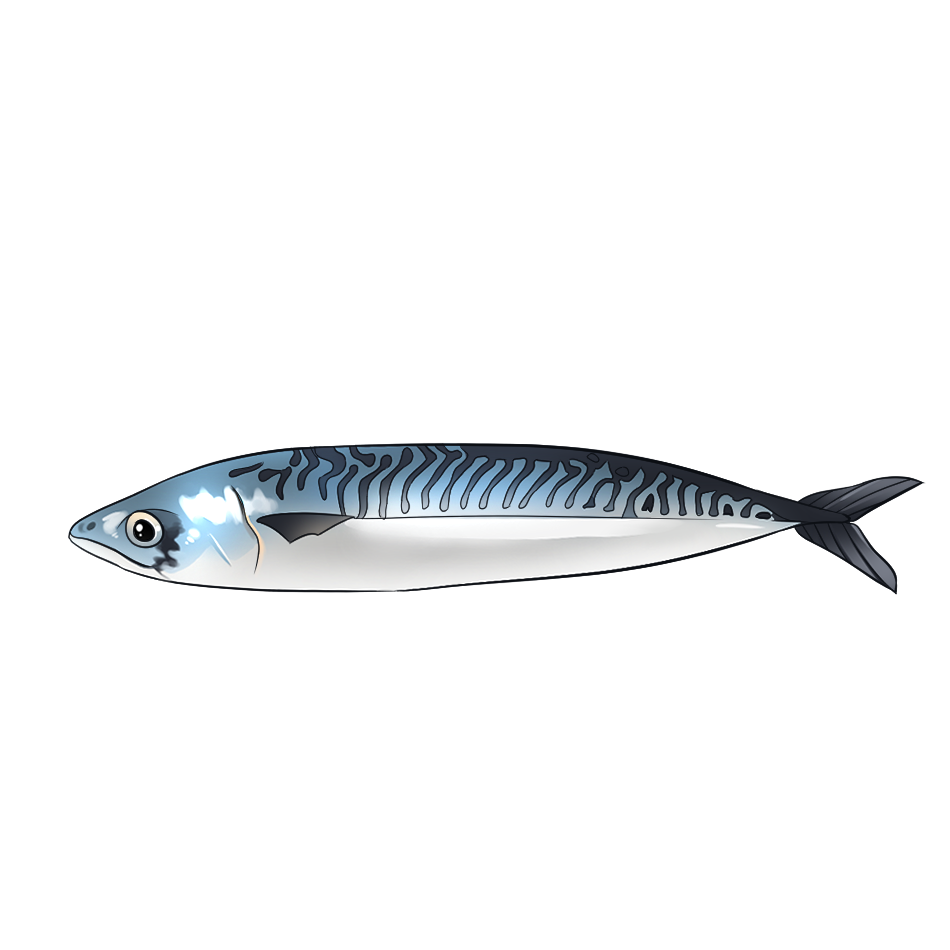
Sake - Salmon
Raw salmon is one of the new sushi ingredients today. It used to be considered impure because of the spawning behaviour. King salmon is most commonly used in Japan. This is one of the most popular sushi variations besides tuna. It is rich in unsaturated fatty acids and very healthy for the human body.
- Size: 70 cm - 80 cm
- English Name: " Chum salmon, Salmon"
- Found in these recipes: Sasimi, Susi, Otyazuke
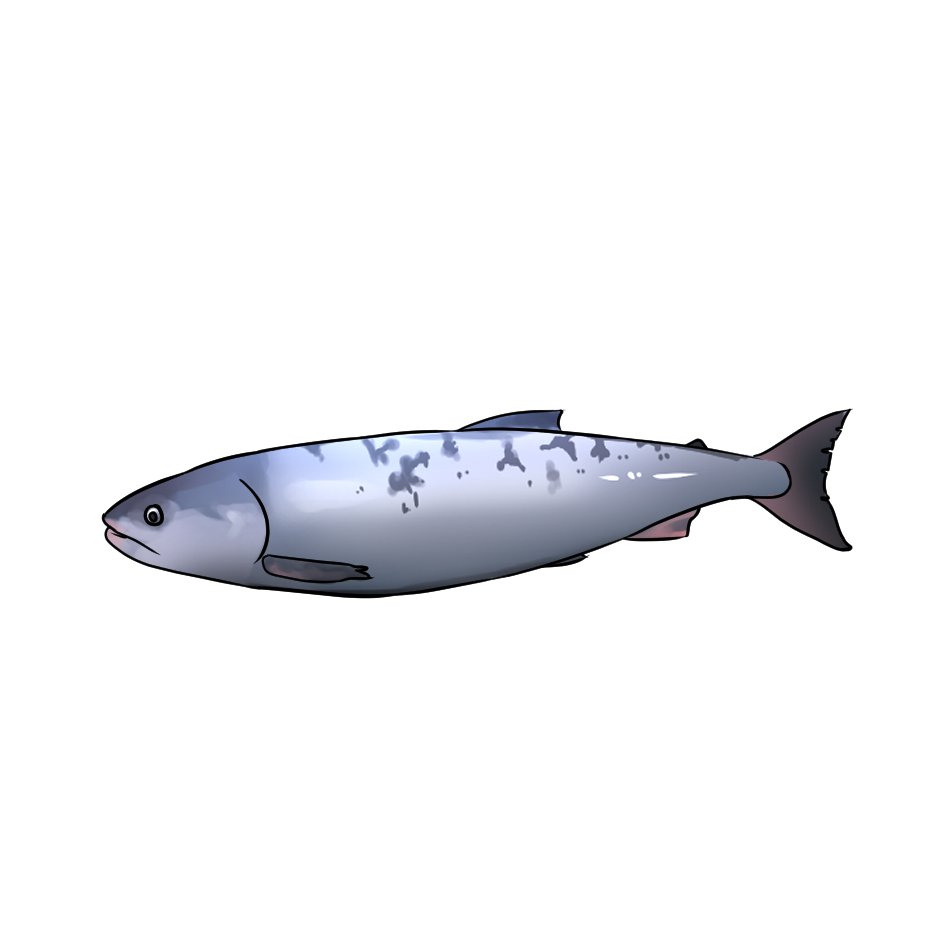


Comments
Lecker sind sie ohne zweifel aber leider meistens überwischt und nicht besonders umweltfreundlich. Grüße, Jesse-Gabriel